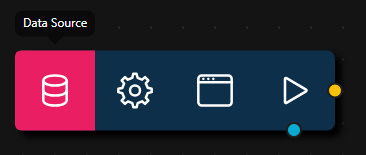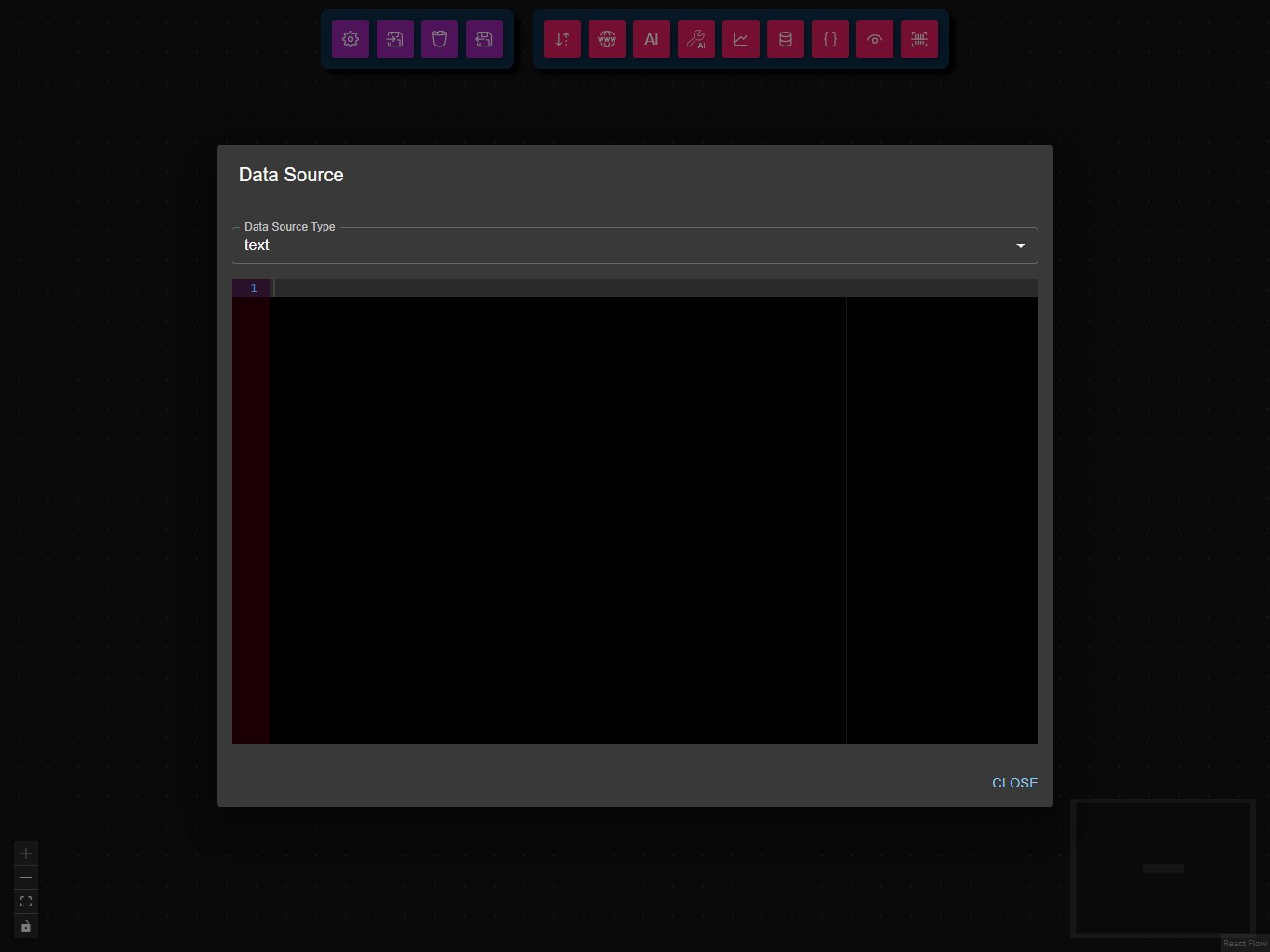Data Source Node
The Data Source Node provides static input for your workflow. Use it to supply text or JSON data directly, such as prompts, configuration, or sample datasets.

Configuration
- Type
- Value
You can choose one of the following types of data:
text: Enter plain text or Markdown.json: Enter JSON data (objects or arrays).

The actual content to be used as input for downstream nodes.

Example Usage
For example usage, see the Weather Dashboard workflow or Google Drive Listing workflow, which use Data Source nodes to provide prompts or configuration.
Common Use Cases
- Prompt Input: Provide instructions or questions for LLM nodes.
- Static Data: Supply sample data for testing or demonstration.
- Configuration: Pass configuration objects to downstream nodes.
- Markdown Content: Input Markdown-formatted text for rendering or processing.
- JSON Input: Provide structured data for validation, transformation, or visualization.
Best Practices
- Choose the correct type: Use
jsonfor structured data,textfor plain text or Markdown. - Validate JSON: Ensure your JSON is valid to avoid downstream errors.
- Use Markdown: For rich text, use Markdown in
textmode. - Keep it simple: Use Data Source nodes for static or rarely-changing inputs.
Troubleshooting
Common Issues
- Invalid JSON: If using
jsontype, ensure the value is valid JSON. - Unexpected output: Double-check the data type and value.
- Downstream errors: Errors in downstream nodes may be caused by incorrect or missing input.
Performance Tips
- Use for small to medium-sized static data.
- For large datasets, consider loading data from an external source.
- Use JSON validation tools to check your input before running the workflow.